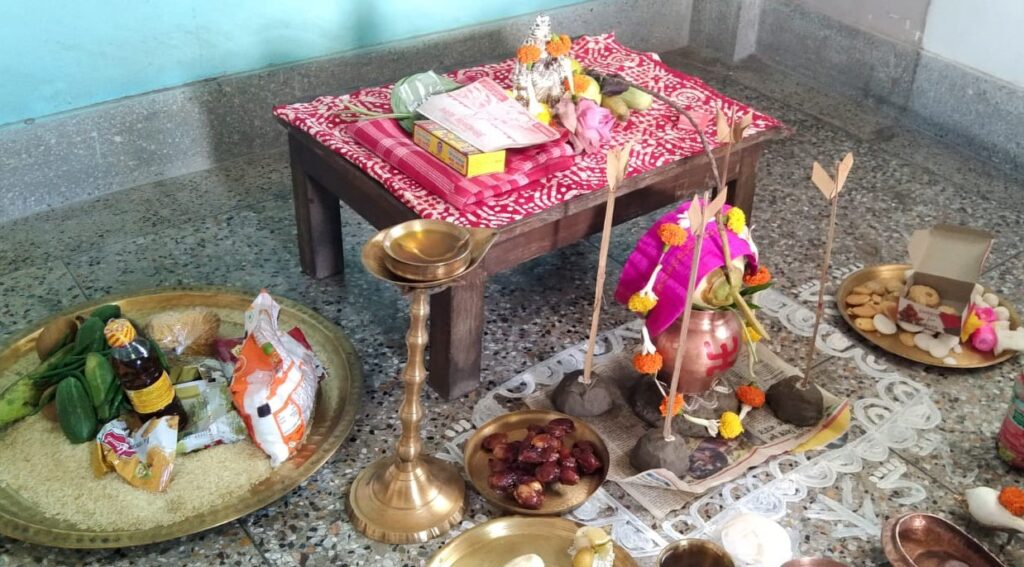On Ashwin Purnima, Lakshmi, who is regarded in Hinduism as the Goddess of Prosperity, is thought to come to Earth to lavishly shower prosperity and health onto everyone. Sharad Purnima is another name for Kojagiri Purnima in different parts of the country. It is a well-known event in Central India, particularly in the Budelkand region and some parts of Bihar.
Goddess Lakshmi is worshipped by devotees at Kojagara Puja. In the neighbourhood, Lakshmi idols are displayed in homes or pandals. The Kojagara Puja rituals differ from community to community. A priest oversees the performance of elaborate Lakshmi Puja. Numerous offerings, including “khichuri,” “taaler phopol,” “narkel bhaja,” and “naru,” are made to the goddess in order to win her favour.
On the day of Kojagara Puja, women decorate the front of their homes with Alpana. The “Alplana,” which represents the feet of the goddess Lakshmi, is most frequently found in homes.

Devotees firmly believe that on this day, Goddess Lakshmi visits every home and bestows prosperity and good fortune upon those who are awake. As a result, they maintain watch all night long, chanting kirtans and bhajans to Goddess Lakshmi. On the eve of Kojagiri Puja, people light up their homes as a welcome gesture.
Reciting Lakshmi-related mantras and stotras on this day is also said to be very beneficial. A vrat (fast) is also observed by some devotees during the Kojagiri Puja, especially by women. They go the entire day without consuming any food or liquids. The vrat is broken by providing flattened rice and coconut water to Goddess Lakshmi after the evening worship is finished.
On the day of the Kojagari Lakshmi Puja, it is thought that Goddess Lakshmi travels around the Earth’s orbit, relieving her followers of their burdens. The Sharad Purnima night brings health and fortune to those who are still awake.